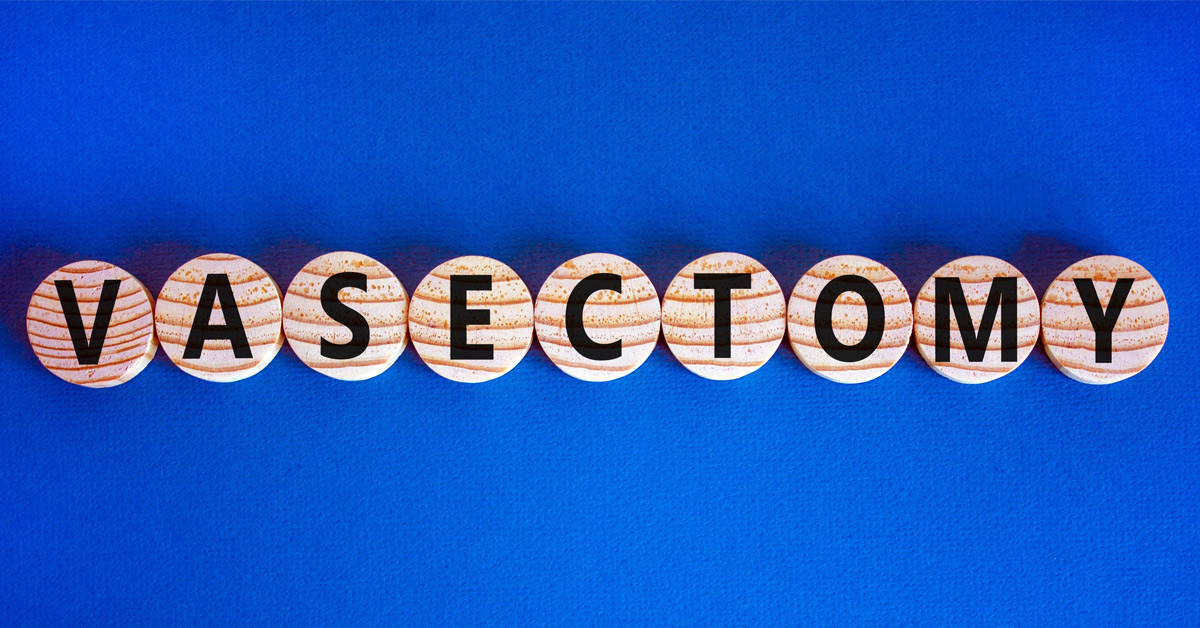By David Talley, MD
Vasectomy is often a word that incites anxiety and fear in men — despite the fact that most men understand the need for this procedure. Wives often bring up this sensitive subject only to have their husbands quickly change the subject or bolt from the room. In reality, vasectomy is a safe and simple in-office procedure.
A vasectomy is, on rare occasions, performed in the operating room due to some anatomical variation or patient compliance. However, it is usually performed in the office under local anesthetic.
When I counsel a particularly nervous patient, I will give him the option of an in-office procedure with oral sedation taken about an hour prior to his vasectomy. A patient who desires oral sedation will need to see me for a counseling conference prior to his vasectomy and thus will require two office visits. However, the majority of my patients opt for local anesthetic alone, and the counseling session and vasectomy are done in one clinic visit with the patient driving himself home afterward.
A recent trend in no-scalpel vasectomies has received much notoriety; however, this technique is merely a matter of semantics. In all vasectomies the skin and vas deferens are numbed with local anesthetic. In the traditional vasectomy, a small nick is made in the skin with a scalpel, while the no-scalpel technique utilizes a small tear made in the skin with a special hemostat. The results are the same. Once a small skin opening is made, the vas deferens is grasped with a special clamp and tied off. The skin is closed with an absorbable suture. Some urologists prefer two separate incisions; I prefer a single incision for the entire procedure. The procedure itself takes only 10 to 15 minutes total.
Vasectomy is a permanent and irreversible sterilization technique, and I really stress this to all my patients. I have some patients tell me they are not sure they want this to be permanent and have “seen the billboards for guaranteed results on vasectomy reversal.” I explain to all patients that while some men do have their vasectomies reversed, there is no way you can guarantee success. Furthermore, insurance does not cover vasectomy reversals, which can cost from $7,500 to $10,000. I tell all men and their wives that if they have any doubts about wanting more children they should not have a vasectomy.
After a vasectomy, men should go home and rest for about 24 hours, while applying ice packs to the scrotum as needed. Patients should avoid exercise, heavy lifting, working around the house, and intercourse for three days. After those three days, patients should be able to return to normal activity. Men are very concerned about pain afterward, but most only need Tylenol or ibuprofen. I do give all patients a prescription for pain medication in case the need arises. Most men who have a desk job or a job with no heavy lifting can go back to work after 24 hours as long as they avoid heavy activity. All men will get a little swelling and bruising after the vasectomy, but this resolves quickly. Most men are quick to tell me about a friend who had “horrible swelling and pain,” and while this does occur on occasion, it is rare. In my experience, a lot of the “horror stories” come from men who did not avoid activity for three postoperative days. With rare exception men who have a vasectomy on Friday are back to work and normal and activity on Monday.
Many men are concerned about the effect a vasectomy will have on their libido, erections, urination, or ejaculation. A vasectomy has no effect on libido, erections, or urination. The amount of semen a man ejaculates will not change after a vasectomy; the only difference is that there are no sperm in the ejaculate. The testicles will also continue to produce testosterone at the same rate. The only change will be the sperm production in the testis, which will begin to slow; the body will reabsorb the sperm that is in the testis.
A vasectomy is such a simple procedure compared to a woman having a tubal ligation. For a woman this involves a major abdominal procedure, which includes the risk of surgery and a general anesthetic. The recovery time for a tubal ligation is much longer and more painful than that of a vasectomy.
I counsel all men and their wives that the vas deferens can grow back together (recanalization) after a vasectomy. This usually occurs in the first six to eight weeks after the procedure, before the sperm count goes to zero. I stress to my patients the importance of using birth control until a post vasectomy semen analysis can be performed (usually 15 to 20 ejaculations after the vasectomy). I also explain that once the sperm count is zero, it is rare but possible for the vas deferens to recanalize.
Having a vasectomy is easier than going to the dentist. In fact, I have done vasetomies on several dentists, who after the procedure confessed that I was right. My goal is for a postvasectomy patient to say: “That was easy and I do not know why I waited so long to have the procedure.”





